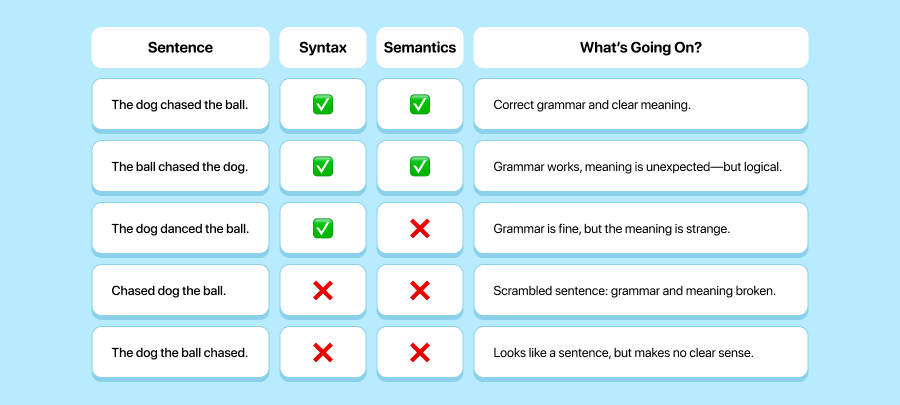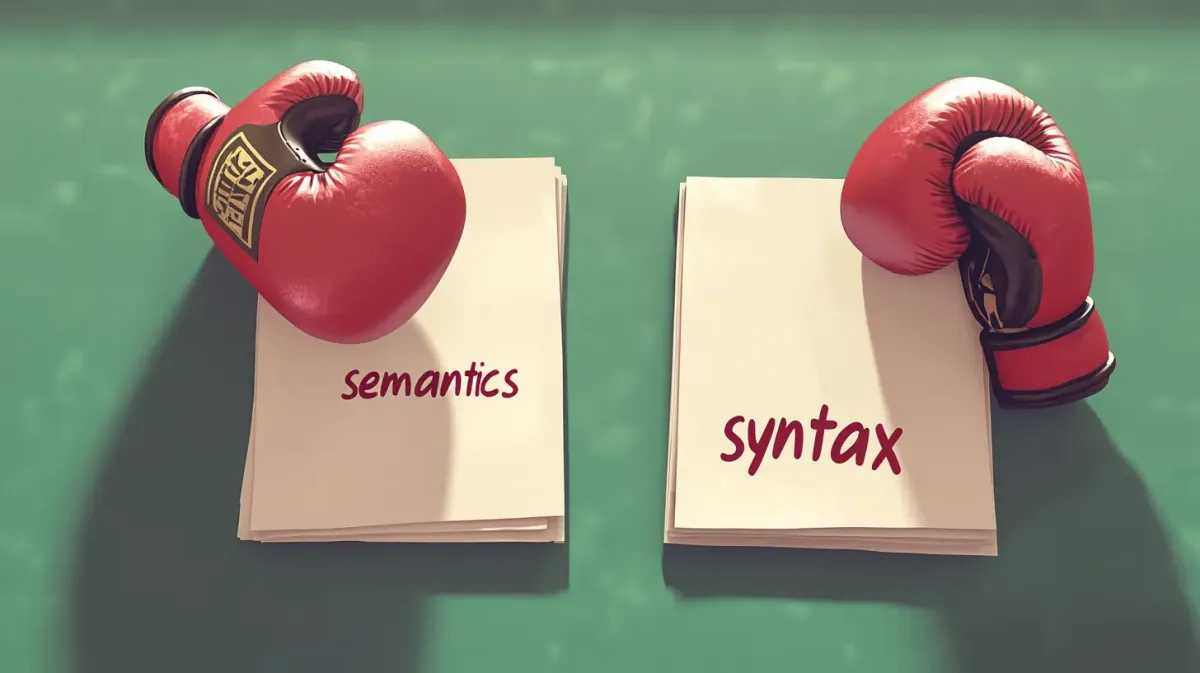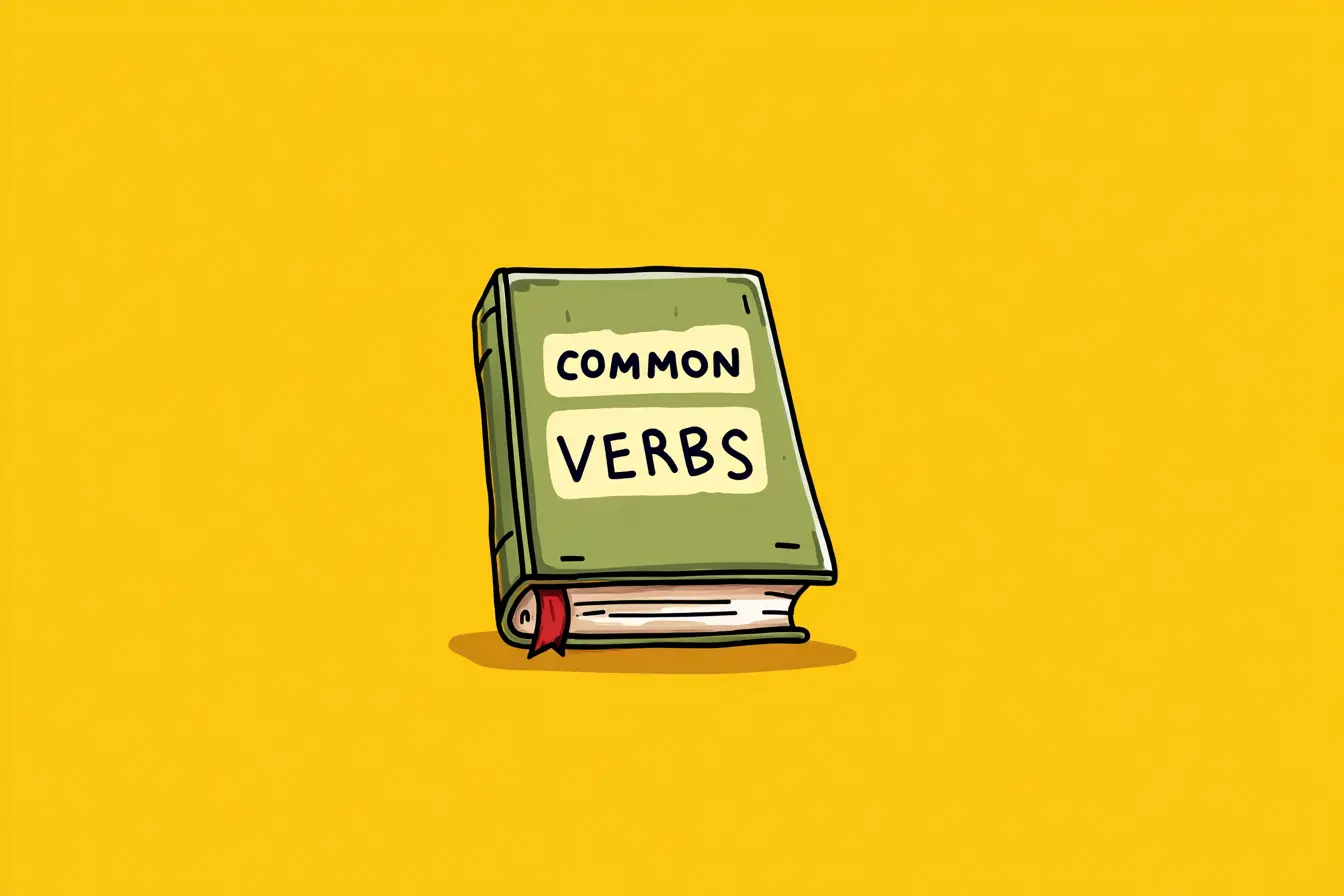Ever heard a sentence that sounded totally correct, but made absolutely no sense? Like, “The furious banana dances slowly”? That’s the sweet spot where syntax and semantics collide. Or rather, where one shows up and the other calls in sick.
So what’s the real difference between them? Why do linguists care? And how can this help you write and speak more clearly?
Let’s talk about syntax vs semantics in a way that actually makes sense (pun intended).
So… What Is Syntax?
Think of syntax as the structure or blueprint of a sentence. It’s not about what you’re saying, it’s about how you arrange the words to say it.
In English, syntax plays a huge role in making your sentence understandable. The order of words tells us who’s doing what to whom. For example, “The dog chased the cat” doesn’t mean the same thing as “The cat chased the dog.” Flip the words, and you flip the meaning.
That’s not true in every language: some languages use word endings instead of word order to show who’s the subject or object. But in English, word order is everything. That’s why understanding syntax in English is so important, especially if you’re learning it as a second language.
So, what’s a simple definition of syntax? Syntax is the set of rules that determines how words are combined to form phrases and sentences—in English, that usually means a pretty strict word order.
Here’s a quick syntax example:
✅ The cat eats fish.
❌ Eats cat the fish.
Same words, very different results. One is a sentence. The other is a puzzle.
Now Enter: Semantics
While syntax focuses on structure, semantics is all about meaning.
Imagine you build a beautiful sentence with perfect syntax. It flows like poetry. But then… you realize it doesn’t actually mean anything. That’s where semantics kicks in. It asks: “Cool sentence, but what are you trying to say?”
Here’s a friendly definition of semantics: it’s the study of meaning in language. It looks at what words, phrases, and entire sentences mean, and how those meanings shift depending on context.
Want a quirky example of semantics?
Colorless green ideas sleep furiously.
Grammatically perfect. Meaningful? Not so much. That sentence follows all the English syntax rules, but your brain can’t connect it to any real situation. That’s a semantic failure.
Understanding semantics in linguistics means digging into how we interpret meaning, handle metaphors, notice double meanings, or understand that “kick the bucket” isn’t always about violence toward household items.
Putting It Together: Syntax vs Semantics in Real Life
Let’s make this super clear with a simple comparison table. Each sentence below is a slight twist on the same idea, all in English, where word order is key to both grammar and meaning. Watch how the structure (syntax) and the sense (semantics) hold up:

In real life, we’re constantly juggling both. You need syntax to sound polished, and semantics to sound like you actually know what you’re talking about.
When we text, write, or speak, we’re always doing a dance between form and meaning. One without the other is like a cake with no sugar or sugar with no cake. You need both to make something people actually enjoy.
Why This Matters (Even If You’re Not a Linguist)
So how does this help you?
If you’re learning English, understanding syntax helps you build sentences that sound natural. Understanding semantics helps you say what you really mean and avoid awkward mix-ups.
If you're writing anything: an email, a blog, a dating profile, being clear in both structure and meaning makes you instantly easier to understand (and trust). And if you're just trying to sound clever in a debate, knowing the difference between syntax and semantics gives you superpowers. You'll catch arguments that "sound right" but fall apart when you really examine the meaning.
You don’t need a PhD to get this stuff. Here’s the bottom line:
- Syntax is how you build a sentence.
- Semantics is what the sentence means.
- Both matter. A lot.
So next time you write something and it feels “off,” ask yourself: Does the sentence follow the rules? (Syntax) Does the sentence actually say what I want it to? (Semantics)
If the answer to both is yes, you’re golden. If not — well, now you know exactly how to fix it.
FAQ
1. What is syntax in writing?
Syntax in writing refers to the way we arrange words and phrases to form correct, clear, and meaningful sentences. In English, this means following a fairly strict word order—usually subject + verb + object. Good syntax helps your writing flow naturally and makes your message easy to understand. Even a great idea can fall flat if the sentence structure is confusing or incorrect.
2. What does “semantics” mean exactly?
The meaning of semantics is all about what words and sentences actually communicate. While syntax focuses on structure, semantics focuses on interpretation: how the listener or reader understands the message. It includes literal meanings, implied meanings, and context-based meanings. If syntax builds the sentence, semantics gives it life.
3. Can a sentence be syntactically correct but semantically incorrect?
Yes! This is very common in jokes, poetry, and surreal writing. For example, “The toaster danced with joy” follows all the rules of English syntax, but semantically, it’s odd, because toasters don’t typically dance or feel emotions. The structure works, but the meaning stretches logic. This is a great way to see the difference between form and meaning in action.


















